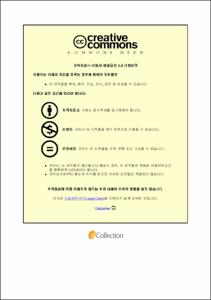2kW급 Reverse Brayton 극저온 냉동기의 시스템 성능 특성에 관한 실험적 연구
- Alternative Title
- Experimental Study on the System Performance Characteristics of 2 kW Class Reverse Brayton Refrigeration System
- Abstract
- With increased commercialization of high-temperature superconducting(HTS) power cables cooled using liquid nitrogen and the use of liquefied natural gas as fuel, the need for large-capacity refrigeration systems is gradually increasing. Among the many refrigeration system, there is a significant interest in reverse Brayton refrigeration system, which have demonstrated excellent energy efficiency and cooling power while requiring less installation space and long maintenance cycles. Hence, significant research and development on the process and thermodynamics of reverse Brayton refrigeration system has been carried out, but experimental research for reverse Brayton refrigeration system is more required.
In this paper, the effect of main components and pressures on the performance and exergy characteristics of reverse Brayton refrigeration system with neon as a refrigerant was analyzed by using the HYSYS software. as a result, The effectiveness of heat exchanger is most important parameter to increase performance and exergy efficiency.
Based on the performance and exergy efficiency analysis, the thermodynamic design of a reverse Brayton refrigeration system with a cooling power of 2 kW class at 77 K has been performed. The proposed refrigeration system uses a cryogenic turbo-expander, scroll compressor, and plate-type heat exchanger unlike conventional reverse Brayton refrigeration system. This study also described the performance test conducted on the fabricated system.
When operating the 77 K for target temperature, it took 5.5 hours to cool down due to the thermal mass of the plate-type heat exchangers. The isentropic efficiency of the cryogenic turbo-expander was measured to be 86 %, which is higher than the design specification. The effectiveness of the plate-type heat exchanger and the flow rate and operating pressure of the refrigerant were found to be lower than the design specification.
As a results of comparing the performance of the reverse Brayton refrigeration system while changing the target temperature from 77 K to 120 K, it could be confirmed that the system is operated stably, the refrigerant flow rate is decreased, the inlet pressure of cryogenic turbo expander is decreased by about 2 ~ 3%, and the buffer tank pressure is increased. The plate-type heat exchanger effectiveness of high pressure is decreased and the plate-type heat exchanger effectiveness of low pressure is increased according to the target temperature increasing.
Consequently, the cooling power of the fabricated reverse Brayton refrigeration system was measured to be 1.23 kW at 77 K and 1.64 kW at 110K. In the future, we expect to achieve the targeted cooling power through further improvements of the scroll compressor and plate-type heat exchanger. In addition, faster commercialization of HTS power cables and more efficient storage of liquefied natural gas will be realized.
- Issued Date
- 2021
- Awarded Date
- 2021. 2
- Type
- Dissertation
- Publisher
- 부경대학교
- Alternative Author(s)
- Keun Tae Lee
- Affiliation
- 부경대학교 대학원
- Department
- 대학원 냉동공조공학과
- Advisor
- 윤정인
- Table Of Contents
- 1. 서론 1
1.1. 연구 배경 1
1.1.1. 초전도 케이블 연구 동향 5
1.1.2. LNG 액화 연구 동향 7
1.1.3. 극저온 냉동기 연구 동향 9
1.2. 종래 연구 13
1.3. 연구의 목적 및 논문 구성 18
2. Reverse Brayton 사이클 및 구성 기기 특성 21
2.1. Reverse Brayton 사이클 21
2.2. 극저온 터보팽창기 28
2.3. 열교환기 30
2.4. Cold box 34
2.5. 극저온 단열 기술 36
3. 사이클 엑서지 해석 41
3.1. 열역학 모델식 41
3.2. 해석 조건 및 계산식 48
3.3. 결과 및 고찰 54
3.3.1. 극저온 터보팽창기 효율의 영향 54
3.3.2. 압축기 효율의 영향 56
3.3.3. 저압부 압력의 영향 58
3.3.4. 고압부 압력의 영향 60
3.3.5. 열교환기 유용도의 영향 62
3.4. 요약 64
4. 사이클 성능 해석 65
4.1. 해석 조건 및 계산식 65
4.2. 결과 및 고찰 67
4.2.1. 극저온 터보팽창기 효율의 영향 67
4.2.2. 압축기 효율의 영향 70
4.2.3. 저압부 압력의 영향 73
4.2.4. 고압부 압력의 영향 76
4.2.5. 열교환기 유용도의 영향 79
4.3. 요약 82
5. 실험장치 및 방법 84
5.1. 실험 장치 84
5.2. 실험 방법 100
6. 실험 결과 103
6.1. 예냉 특성 103
6.2. 구성 기기 특성 106
6.2.1. 열교환기 특성 106
6.2.2. 극저온 터보팽창기 특성 110
6.3. 시스템 성능 특성 112
6.4. 열부하 변동 특성 115
6.5. 요약 122
7. 결론 124
참고문헌 127
감사의 글 138
- Degree
- Doctor
- Files in This Item:
-
-
Download
 2kW급 Reverse Brayton 극저온 냉동기의 시스템 성능 특성에 관한 실험적 연구.pdf
기타 데이터 / 3.4 MB / Adobe PDF
2kW급 Reverse Brayton 극저온 냉동기의 시스템 성능 특성에 관한 실험적 연구.pdf
기타 데이터 / 3.4 MB / Adobe PDF
-
Items in Repository are protected by copyright, with all rights reserved, unless otherwise indicated.